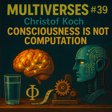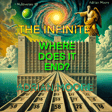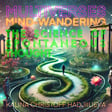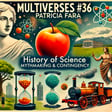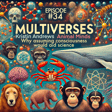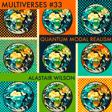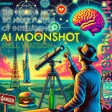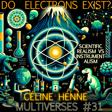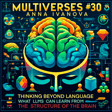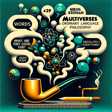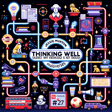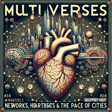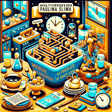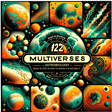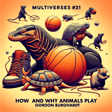
20| Simon Kirby — Language Evolution & Emergence of Structure
Language is the ultimate Lego. With it, we can take simple elements and construct them into an edifice of meaning. Its power is not only in mapping signs to concepts but in that individual words can be composed into larger structures.
How did this systematicity arise in language?
Simon Kirby is the head of Linguistics and English Language at The University of Edinburgh and one of the founders of the Centre for Langauge Evolution and Change. Over several decades he and his collaborators have run many elegant experiments that show that this property of language emerges inexorably as a system of communication is passed from generation to generation.
Experiments with computer simulations, humans, and even baboons demonstrate that as a language is learned mistakes are made - much like the mutations in genes. Crucially, the mistakes that better match the language to the structure of the world (as conceived by the learner) are the ones that are most likely to be passed on.
Links
- Simon's website with art, music, and talks on language evolution
- Simon's academic homepage
- Simon on X
- Multiverses Podcast home
Outline
(00:00) Introduction
(2:45) What makes language special?
(5:30) Language extends our biological bounds
(7:55) Language makes culture, culture makes language
(9:30) John Searle: world to word and word to world
(13:30) Compositionality: the expressivity of language is based on its Lego-like combinations
(16:30) Could unique genes explain the fact of language compositionality?
(17:20) … Not fully, though they might make our brains able to support compositional language
(18:20) Using simulations to model language learning and search for the emergence of structure
(19:35) Compositionality emerges from the transmission of representations across generations
(20:18) The learners need to make mistakes, but not random mistakes
(21:35) Just like biological evolution, we need variation
(27:00) When, by chance, linguistic features echo the structure of the world these are more memorable
(33:45) Language experiments with humans (Hannah Cornish)
(36:32) Sign language experiments in the lab (Yasamin Motamedi)
(38:45) Spontaneous emergence of sign language in populations
(41:18) Communication is key to making language efficient, while transmission gives structure
(47:10) Without intentional design these processes produce optimized systems
(50:39) We need to perceive similarity in states of the world for linguistic structure to emerge
(57:05) Why isn’t language ubiquitous in nature …
(58:00) … why do only humans have cultural transmissions
(59:56) Over-imitation: Victoria Horner & Andrew Whiten, humans love to copy each other
(1:06:00) Is language a spandrel?
(1:07:10) How much of language is about information transfer? Partner-swapping conversations (Gareth Roberts)
(1:08:49) Language learning = play?
(1:12:25) Iterated learning experiments with baboons (& Tetris!)
(1:17:50) Endogenous rewards for copying
(1:20:30) Art as another angle on the same problems

